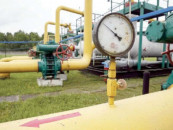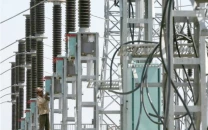Railways and the NLC
Decline of Pakistan Railways was a result of a number of factors, but the coincidence with the rise of NLC is telling


The decline of the Pakistan Railways (PR) has been a result of a number of factors, but the coincidence with the rise of the NLC is telling. The army was called in aid of civil authority in 1978 to decongest the Karachi Port. The task was successfully accomplished. Instead of letting the civil authority take over and the private and public sectors flourish in the transport sector, the then military government used the experience to create the NLC. The PR was the worst sufferer. It not only lost the edge enjoyed in moving public sector freight, but also the orders of the second-largest spender of the budget — the military.
The numbers speak for themselves. In 1975-80, the PR owned an average of 36,515 freight wagons. By 2005-2010, the average had crashed to 18,569. In the same period, the number of freight wagons loaded crumbled from 680,696 to 325,308 and the freight-to-passengers earning ratio reversed from to two to 0.7. Freight makes the railways profitable and enables cross-subsidisation of unprofitable but important linkages with less developed regions. In 1975-80, the PR’s ordinary working expenses were 80 per cent of its gross earnings. After the collapse of the freight earnings, these expenses rose to 113 per cent in 2005-10. Many non-remunerative, but nationally integrative branch lines, had to be closed. The rot continues and the ratio of expenses-to-total earnings jumped to 194 per cent in 2012-13, the year of latest data availability.
Road transport now carries 96 per cent of inland freight. Having the country’s largest fleet in dry and liquid cargo freight service, the share of the NLC alone is three times that of the PR. The shift from rail to road has not necessarily been efficient. The authors of Vision 2025 estimate a cost of four to six per cent of the GDP imposed by an inefficient transport system, consisting largely of roads. And yet, the lion’s share of public investment is reserved for roads. Interestingly, the NLC itself admits that “rail is the most preferred, safest and less expensive mode of transportation across the globe. The share of rail freight transport in most of developed and some developing countries ranges from 60 per cent to 70 per cent.” After expanding its business from trucking to engineering and construction, to dry ports, border terminals and tolling, the NLC wanted to enter the rail business. Locomotives costing around $12 million were procured from Korean Rail to run an NLC freight train. A public-private partnership agreement was signed with the PR, the NLC being the ‘private’ party here. Strange are the ways of our privatisers. Here is an entity, which has used the most effective public clout, preferential treatment and implicit subsidies, besides over-stretching its original mandate, not to mention the failed venture into speculative investments, being allowed to ‘privatise’ part of the PR, an overtly public sector entity. But for the railway workers’ resistance, this would have been a done deal.
Published in The Express Tribune, October 17th, 2014.
Like Opinion & Editorial on Facebook, follow @ETOpEd on Twitter to receive all updates on all our daily pieces.



















COMMENTS
Comments are moderated and generally will be posted if they are on-topic and not abusive.
For more information, please see our Comments FAQ